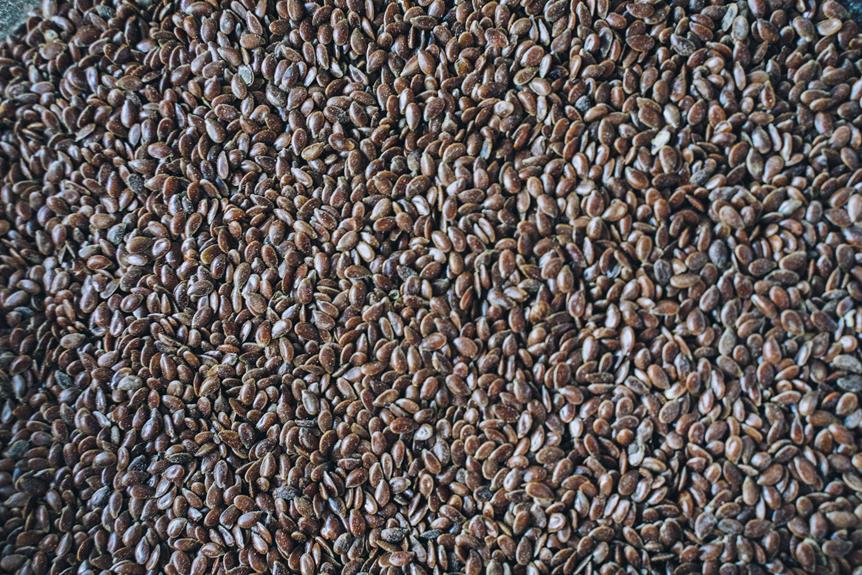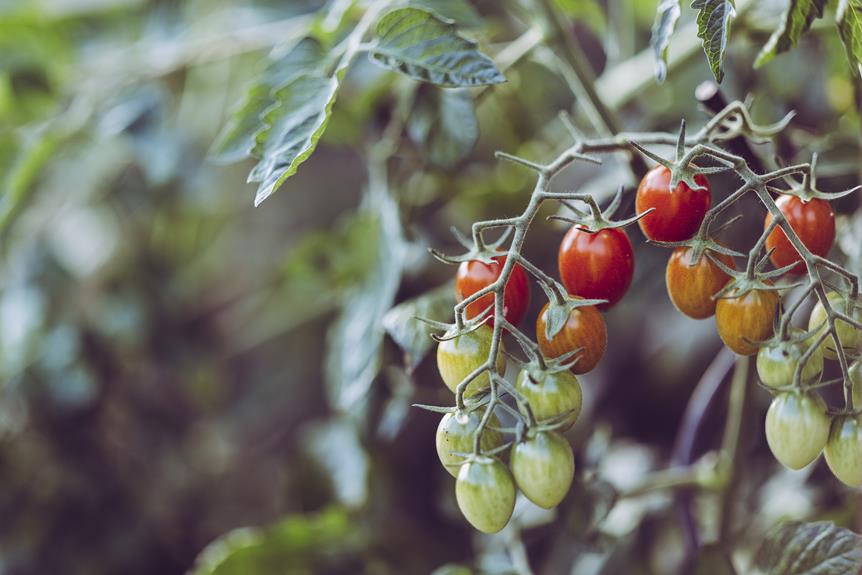Looking to improve your organic farming practices? Want to achieve sustainable crop rotation? Look no further! In this article, we've got 10 tips just for you.
- Discover the importance of crop rotation
- Learn how to understand soil health
- Choose the right crop sequence
Incorporate cover crops, manage pests and diseases, and monitor nutrient levels.
- Implement conservation practices
- Maximize biodiversity
- Assess and adjust your rotation plans
Get ready to take your organic farming to the next level!
Importance of Crop Rotation
You should always prioritize the importance of crop rotation in organic farming to ensure the long-term health and productivity of your soil. Understanding crop yields and implementing effective crop rotation techniques are essential for maintaining the fertility of your land and maximizing your harvests.
Crop rotation involves systematically changing the types of crops grown in a particular area over time. This practice is crucial because it helps prevent the buildup of pests, diseases, and nutrient deficiencies in the soil. By rotating crops, you disrupt the life cycles of pests, making it harder for them to establish and spread. Additionally, different crops have varying nutrient requirements, so rotating crops helps balance nutrient levels in the soil, reducing the need for synthetic fertilizers.
There are various crop rotation techniques you can implement on your farm. One common method is to alternate between crops from different plant families to minimize the risk of disease transmission. For example, you could rotate between legumes, such as beans or peas, which fix nitrogen in the soil, with crops like corn or tomatoes that have higher nitrogen requirements. Another technique is to include cover crops in your rotation, which help improve soil structure, prevent erosion, and enhance nutrient cycling.
Understanding Soil Health
To understand soil health, you need to consider three important factors: soil nutrient cycling, microbial diversity, and fertility.
Soil nutrient cycling refers to the process of nutrients being absorbed by plants, released back into the soil, and then taken up again.
Microbial diversity plays a crucial role in maintaining soil health by promoting nutrient availability and decomposition of organic matter.
Soil Nutrient Cycling
Understanding soil health is crucial for sustainable crop rotation in organic farming, as it allows for the efficient cycling of nutrients in the soil. Soil nutrient cycling refers to the continuous movement and transformation of essential nutrients, such as nitrogen, phosphorus, and potassium, within the soil ecosystem. Proper nutrient management is essential for maintaining soil fertility and promoting healthy plant growth. Organic farmers utilize various techniques to enhance soil nutrient cycling, such as crop rotation, cover cropping, and the use of organic fertilizers. These practices help to replenish nutrient levels, reduce nutrient losses, and promote beneficial soil microorganisms. By understanding soil health and implementing sustainable nutrient management strategies, organic farmers can optimize crop productivity while minimizing environmental impacts.
| Techniques for Soil Nutrient Cycling | Benefits | |
|---|---|---|
| Crop | Disease-resistant Variety | Common Diseases Controlled |
| Tomatoes | 'Celebrity', 'Mountain Merit' | Early blight, Late blight |
| Potatoes | 'Elba', 'Kennebec' | Late blight, Scab |
| Apples | 'Liberty', 'GoldRush' | Apple scab, Fire blight |
| Peppers | 'Jalapeno M', 'Cayenne Long Red Slim' | Phytophthora blight, Bacterial spot |
Selecting disease-resistant crop varieties is a proactive approach to pest and disease management that can contribute to the long-term success of your organic farm.
Crop Rotation Benefits
Enhance the management of pests and diseases on your organic farm by implementing crop rotation techniques that disrupt their life cycles and promote a healthier ecosystem.
Crop rotation offers several benefits that contribute to sustainable farming practices. Here are five reasons why incorporating crop rotation techniques is essential:
- Breaks the life cycle of pests and diseases, reducing their population.
- Reduces the need for chemical pesticides, promoting a more natural approach.
- Enhances soil fertility by alternating crops with different nutrient requirements.
- Controls weed growth by disrupting their growth patterns.
- Increases biodiversity, attracting beneficial insects and organisms that prey on pests.
Timing and Duration of Rotation
Plan your crop rotations carefully, considering the optimal timing and duration for each rotation cycle. Proper timing and duration of rotation are crucial factors in managing pests and maximizing crop yield in organic farming.
Timing is important because it determines when to plant and harvest different crops in the rotation cycle. By rotating crops with different life cycles, you can disrupt the life cycle of pests and reduce their population. For example, if you have a pest that thrives on a particular crop, rotating to a different crop will break the pest's life cycle and decrease its population. Additionally, timing the rotation to avoid peak pest activity can further minimize pest damage.
Duration refers to the length of time each crop is grown before rotating to the next one. The ideal duration depends on various factors such as the crop's growth rate, nutrient requirements, and pest susceptibility. Rotating crops at the right time prevents the buildup of pests and diseases that are specific to certain crops. It also allows the soil to recover and replenish nutrients, resulting in healthier plants and higher yields.
Monitoring Nutrient Levels
To effectively manage nutrient levels, you should regularly assess the soil's fertility and adjust your organic farming practices accordingly. Monitoring nutrient levels is crucial for maintaining the health and productivity of your crops. By keeping an eye on the nutrient content in your soil, you can ensure that your plants have access to the essential elements they need for growth.
Here are five important factors to consider when monitoring nutrient levels:
- Conduct regular soil tests: Soil testing is essential for determining the nutrient levels in your soil. It helps you identify any deficiencies or imbalances that may need to be addressed.
- Keep track of nutrient inputs: Monitoring the amount and type of nutrients you add to your soil is crucial for maintaining the right nutrient balance. This includes organic fertilizers, compost, and cover crops.
- Observe plant symptoms: Symptoms such as yellowing leaves, stunted growth, or nutrient deficiencies can indicate imbalances in the soil. Regularly observing your plants can help you identify and address any nutrient issues.
- Adjust crop rotation: Crop rotation plays a vital role in soil fertility management. By rotating crops, you can prevent nutrient depletion and enhance nutrient availability.
- Implement organic matter management: Organic matter, such as compost and cover crops, improves soil fertility and nutrient retention. Monitoring and managing organic matter inputs can help maintain nutrient levels in the soil.
Implementing Conservation Practices
To effectively implement conservation practices in organic farming, it's important that you prioritize soil health and biodiversity. By incorporating conservation techniques and sustainable practices, you can ensure the long-term viability of your farm while minimizing environmental impacts.
One essential conservation technique is the use of cover cropping. Planting cover crops during periods of crop rotation helps to prevent soil erosion, improve soil fertility, and enhance water retention. These cover crops also provide habitat for beneficial insects and microorganisms, promoting biodiversity on your farm.
Another important practice is the implementation of agroforestry systems. By integrating trees or shrubs into your farming practices, you can create a diverse ecosystem that supports pollinators, provides shade, and improves soil structure. Agroforestry systems also have the potential to sequester carbon, mitigating climate change impacts.
Additionally, conserving water through techniques like drip irrigation and rainwater harvesting is crucial. These practices minimize water waste and ensure that water is used efficiently, reducing the strain on local water resources.
Lastly, implementing integrated pest management (IPM) strategies can help reduce reliance on synthetic pesticides. IPM involves the use of natural predators, crop rotation, and cultural practices to control pests and diseases, minimizing the negative impacts on the environment and promoting a healthy ecosystem.
Maximizing Biodiversity on the Farm
By incorporating diverse habitats and promoting the presence of beneficial organisms, you can maximize biodiversity on your farm, enhancing ecosystem health and resilience. Here are some effective strategies to consider:
- Plant native flowering plants: By including a variety of native flowering plants in your farm, you can attract and support a diverse range of pollinators, such as bees, butterflies, and hummingbirds. This will help to increase pollinator populations, ensuring the successful pollination of your crops.
- Create hedgerows and windbreaks: Establishing hedgerows and windbreaks around your fields can provide shelter and nesting sites for beneficial insects. These insects, including ladybugs, lacewings, and hoverflies, play a crucial role in controlling pests by preying on them. Encouraging their presence can help to naturally manage pest populations.
- Install insect hotels: Constructing insect hotels in your farm can provide additional habitat for beneficial insects to thrive. These hotels provide nesting sites and shelter for solitary bees, wasps, and beetles, which are all valuable allies in maintaining a balanced ecosystem.
- Practice companion planting: Companion planting involves growing different plant species together that benefit each other. For example, planting aromatic herbs like cilantro and dill near your crops can attract beneficial insects, including parasitic wasps, which prey on pest insects.
- Reduce pesticide use: Minimizing the use of pesticides on your farm can help protect beneficial insects from harm. Instead, consider using organic methods like crop rotation, trap crops, and biological control to manage pests while preserving biodiversity.
Assessing and Adjusting Rotation Plans
As you assess and adjust your rotation plans, it is important to consider the specific needs of your crops and the goals of your organic farming practices. Assessing rotation effectiveness allows you to understand how well your current rotation plan is working and identify any areas for improvement. This can be done by monitoring crop yields, soil health, and pest and disease incidence over time. Adjusting crop plans is necessary to optimize the benefits of crop rotation. You may need to make changes based on factors such as market demand, climate conditions, and crop performance. To help you in this process, here is a table outlining key considerations when assessing and adjusting rotation plans:
| Considerations | Examples | Actions |
|---|---|---|
| Crop performance | Low yields, pest infestations | Replace underperforming crops with more suitable options |
| Soil health | Nutrient deficiencies, erosion | Incorporate cover crops and green manure to improve soil fertility and structure |
| Pest management | Increased pest pressure, disease outbreaks | Rotate crops to disrupt pest life cycles and reduce disease incidence |




